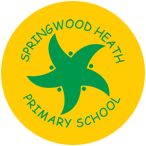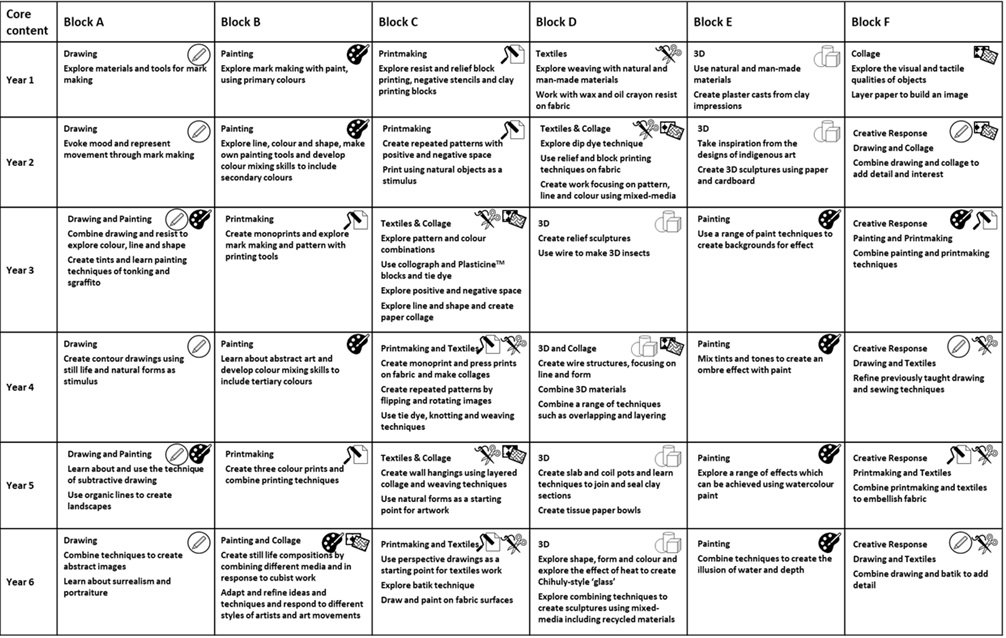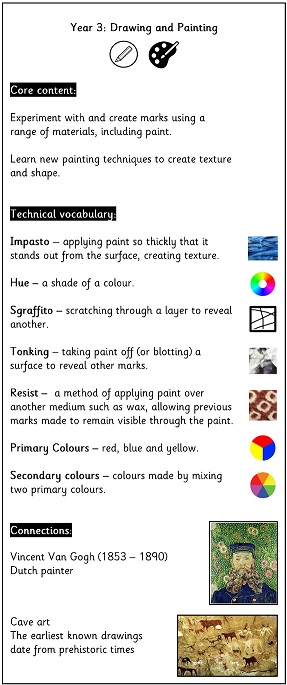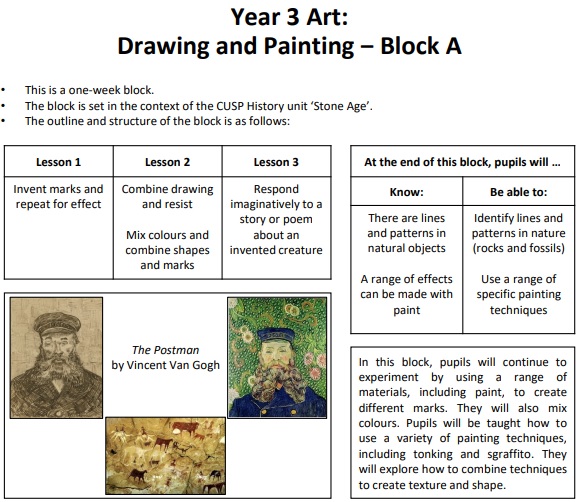At Springwood Heath, our Art curriculum is designed to engage, inspire and challenge pupils. We aim to equip children with the knowledge and skills to be able to experiment, invent and create their own works of art. As pupils progress, they should gain a deeper understanding of how art and design reflects and shapes our history, and how it contributes to the culture, creativity and wealth of our world.
We want our children to love art and design! We encourage them to have limitless ambitions and to grow up wanting to be illustrators, graphic designers, fashion designers, curators, architects or printmakers.
At Springwood, we hope to prepare them for the opportunities, responsibilities and experiences of later life. We want our children to use the vibrancy of our great city as inspiration, to learn from other cultures and respect diversity. To that end, we have carefully selected a wide range of unique and diverse artists, craft makers and designers for children to study and have planned opportunities for children to visit the art galleries and museums of our local area.
Implementation (Overviews)
Springwood Heath adopted the CUSP Art Curriculum starting in September 2023.
This is organised into blocks with each block covering a particular set of artistic disciplines, including drawing, painting, printmaking, textiles, 3D and collage. Vertical progression in each discipline has been deliberately woven into the fabric of the curriculum so that pupils can revisit key disciplines throughout their Primary journey at increasing degrees of challenge and complexity.
In addition to the core knowledge required to be successful within each discipline, the curriculum outlines key aspects of artistic development in the Working Artistically section. Each module will focus on developing different aspects of these competencies. This will support teachers in understanding pupils’ development as artists more broadly, as well as how successfully they are acquiring the taught knowledge and skills.
Early Years
Expressive Arts and Design in EYFS
- Make ‘Three Pigs’ houses using different materials
- Make a Gingerbread Man – collage
- Making a Large Chinese Dragon
- Beanstalk sculptures
- Supertato – Make own Supertatoes using potatoes
- Paper plate – Evil Peas
- Large painting ‘Wild Thing’
- Story box ‘Whatever Next’
- Make items for a Space Station – Role Play
- Paper plate – Flying saucers/space craft
- Salt dough – Aliens
- Paint aliens – Splodge and add eyes
- Make individual rockets
- Marbling paint –planets
- Make moon sand – 8 cups flour. 1 cup baby oil.
- Fizzing planets
- Mother’s Day cards
- Paint Ladybirds
- Make a stick person
- Make a snow scene for ‘Stickman’
- Draw a mermaid using pastels
- Paint sea creatures
- Drawing leaves
- Make spider web pictures
- Paint farm animals
- Print caterpillar pictures
- Mono printing worm patterns
Plus many more activities linked to the calendar!
KS1& KS2 Curriculum Overview
Knowledge Notes
The overview provides a list of the expected outcomes for the block provides details of the artistic knowledge and skills pupils will be expected to have acquired by the end of the block. It includes detailed explanations of the core knowledge covered in each block.
Mapping of Knowledge within a unit
Class timetables have been built to ensure a broad and balanced curriculum. Subjects have been blocked in a spaced retrieval model to support catch up and to build the frequency of science and wider curriculum subjects. This maximises learning time. Art has been timetabled in extended sessions to enable children to have time to develop depth. Here is an example of a weekly overview:
The units are supported by vocabulary modules which provide resources for both teaching and learning. We aim to provide a high challenge with low threat culture and put no ceiling on any child’s learning, instead providing the right scaffolding for each child so they can achieve.
Impact
How do we know what children have learnt?
The assessment of pupils is formative based on pupil outcomes and questioning from each lesson. The following can be used to assess pupils’ knowledge and application of artistic techniques and their understanding and use of artistic vocabulary.
- Expectations for each block are made explicit on slide one, e.g. At the end of this block pupils will know marks can be made using a variety of drawing tools and will be able to select appropriate tools and make a range of marks.
- The Point of Reflection section specifies the expected outcome for each lesson.
- The Questions for Assessment section in each block provide specific questions to be used with pupils to elicit their level of understanding of tools, techniques and effects, e.g. What happens if you change the size of the mark?
- The Oracy and Vocabulary tasks on slide five provide ample opportunities for teachers to evaluate pupils’ ability to: – use artistic language effectively; – explain artistic techniques and processes; – evaluate their own and others’ work.
- The vocabulary quiz on slide six provides an opportunity for teachers to assess pupils’ deeper understanding and application of artistic and technical vocabulary covered in the block.
- The exemplifications demonstrate the expected standard against which teachers can assess pupils’ work. The best form of assessment in art is in-action, while pupils are working. This helps us to understand pupils’ development as artists, rather than their ability to produce a prescribed end outcome. By encouraging pupils to articulate their thinking and reflections, we can understand which aspects of artistic development.
Newsletters
28th February 2025
Friday 14th February
Friday 7th February
17th January 2025







